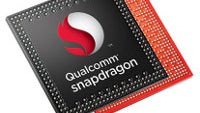Still confused? Here's the difference between the Snapdragon 800 and 801

With the Snapdragon 801, Qualcomm sure ushered in a short period of confusion in the mobile space.
At first, some of us thought that the San Diego-based company was simply moving things around and that no new tech was actually involved. Instead, some reasoned, Qualcomm was simply moving its higher bin Snapdragon 800 units into a new category to distinguish them from the rest, as they were slightly more powerful. After all, few can and are willing to memorize all the different versions of the SD800 -- 8974VV, 8974AB, 8974AA -- they are just way too cryptic for the average Joe. We soon found out that that was not the case, however, and the Snapdragon 801 is a new, improved version of the Snapdragon 800 that put more on the table than just a higher CPU and GPU clock.
Thankfully, AnandTech, always on hot on all things processor-related, have recognized the need for clarification, and have broken down the different versions of the two processors for the world to see.
| Model | Max CPU clock | Max GPU clock | ISP | eMMC | Dual SIM, Dual Active | Memory interface | |
| MSM8974VV | Snapdragon 800 | 2.2GHz | 450MHz | 320MHz | v. 4.5 | NO | 800MHz |
| MSM8974AA | Snapdragon 800 | 2.3GHz | 450MHz | 320MHz | v. 4.5 | NO | 800MHz |
| MSM8974AB | Snapdragon 800 | 2.3GHz | 550MHz | 320MHz | v. 4.5 | NO | 933MHz |
| MSM8974AA | Snapdragon 801 | 2.3GHz | 450MHz | 320MHz | v. 5.0 | YES | 800MHz |
| MSM8974AB | Snapdragon 801 | 2.3GHz | 578MHz | 465MHz | v. 5.0 | YES | 933MHz |
| MSM8974AC | Snapdragon 801 | 2.5GHz | 578MHz | 465MHz | v. 5.0 | YES | 933MHz |
As you can see, the differences, while not exactly massive, are there. Beyond the difference in higher CPU and GPU clock (depending on the versions you pick), the Snapdragon 801 also brings support for eMMC 5.0 and DSDA (Dual SIM, Dual Active) over the Snapdragon 800. This means that the new chip can handle maximum interface speeds of up to 400MB/s, a hike from the 200MB/s limitation in eMMC 4.5, though do keep in mind that the flash memory found even in flagship smartphones is still playing catch up. DSDA, if you need a clarification, allows your smartphone to hold two simultaneous calls on two SIM cards, unlike the more common DSDS configuration, which stands for Dual SIM, Dual Stanbdy (only one call at a time). A nice bonus for developing areas, but pretty irrelevant for the Western world, where dual SIM devices are rare.
Last but not least, the AB/AC versions of the Snapdragon 801 come with a faster LPDDR3 interface, which should help with memory hog applications like sophisticated 3D games, and even certain camera/imaging processes, as AnandTech notes.
In any case, it's worth pointing out that the most potent bin of the Snapdragon 800 will perform a tad better than the weakest version of the Snapdragon 801, at least as of this writing. That's especially true if the device you're looking at is not a dual SIM variant, and the built-in flash memory on it is incapable of such high I/O speeds.
source: AnandTech










Things that are NOT allowed: